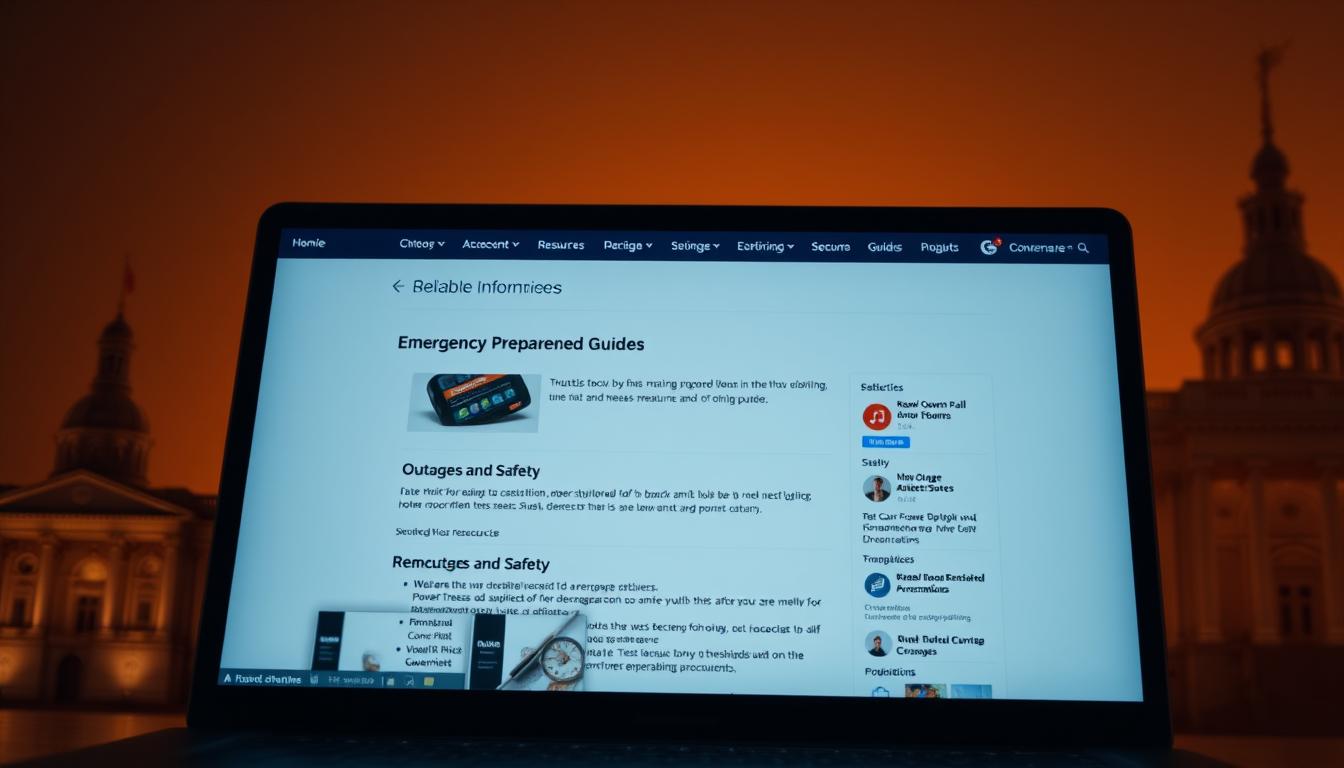
How to Keep Your Home Safe During Power Outages
How to Keep Your Home Safe During Power Outages
Did you know U.S. households experience twice as many power outages today compared to a decade ago? Weather disasters, aging infrastructure, and rising energy demands leave millions without electricity yearly. When the lights go out, families face risks like security system failures, food spoilage, and disrupted medical devices.

Protecting your home starts with understanding modern vulnerabilities. Smart locks, security cameras, and garage doors often rely on Wi-Fi. Refrigerators lose cooling within hours. Even basic tasks like charging phones or lighting rooms become urgent challenges.
Building a reliable strategy involves three core elements: backup power solutions, communication plans, and physical safeguards. Portable generators or solar-powered systems keep critical devices running. Pre-determined meeting spots and offline contact lists ensure family coordination. Reinforced doors and window locks add extra security layers.
Key Takeaways
Power outages have increased 100% in the U.S. over the past 10 years
Modern homes face unique risks due to smart technology dependencies
Backup power sources prevent food/medicine spoilage
Offline communication plans reduce confusion during outages
Physical security upgrades protect against vulnerabilities
Understanding the Risks of Power Outages
Electrical grids across America face growing strain from multiple threats. Severe weather, aging equipment, and extreme temperatures create vulnerabilities affecting households nationwide. Recognizing these challenges helps families address dangers before they escalate.
What Triggers Electrical Failures
Weather remains the top cause of blackouts in the United States. Hurricanes knock out power for days in coastal regions, while ice storms paralyze Midwest communities annually. Equipment failures account for 35% of outages, often striking without warning during peak usage times.
Geographic risks vary significantly. Wildfire-prone areas face preemptive shutoffs, whereas tornado alley residents experience sudden grid damage. Government reports show Texas and California experience the most frequent large-scale disruptions.
When Darkness Disrupts Normal Life
Modern homes lose critical functions rapidly during outages. Security cameras go offline within minutes, while refrigerators reach unsafe temperatures in 4 hours. Medical devices like oxygen concentrators become unusable, creating life-threatening situations.
Communication breakdowns isolate families
Extreme heat/cold risks for vulnerable groups
Increased fire hazards from candle use
Economic consequences hit hard too. A 24-hour outage can spoil $250 worth of groceries. Small businesses lose revenue daily until power returns. Proactive measures reduce these impacts significantly.
Essential Emergency Preparedness Kit for Power Outages
How many American homes can function three days without electricity? Recent surveys show 60% lack adequate provisions for extended blackouts. A well-stocked kit bridges the gap between temporary inconvenience and dangerous situations.

Must-Have Items and Critical Resources
Build your household solution around three fundamentals: sustenance, safety, and communication. Experts recommend these essentials:
3-day water supply (1 gallon per person daily)
Non-perishable foods requiring no cooking
LED lanterns with extra batteries
Weather radio with hand-crank charging
"Families who test their kits quarterly experience 40% fewer complications during actual outages" - FEMA preparedness specialist
Addressing Household and Animal Needs
Customize your provisions for all living situations. Households with infants need formula and diapers, while seniors require medication chill packs. Pet owners should include:
Collapsible food/water bowls
2-week medication supply
Comfort items like familiar toys
Store kits in multiple locations - basement storage tubs for home use, compact backpacks for vehicles. Mark expiration dates clearly and refresh contents every six months. Digital natives often forget physical copies of insurance policies and vet records prove invaluable when systems fail.
Securing Your Home and Family During an Outage
When security systems go dark, how do you protect what matters most? Modern homes face unique challenges when electricity fails, with smart locks, cameras, and alarms becoming instant vulnerabilities. A layered defense strategy keeps your household safe until normal operations resume.
Home Security Strategies
Teach every family member manual door operations for garages and gates. Practice unlocking mechanisms monthly - 43% of homeowners forget these steps during actual blackouts. Designate a central meeting spot and backup communication methods like two-way radios.
Dark homes attract unwanted attention. Keep window coverings closed to hide interior visibility. Install battery-powered motion lights around entry points - they deter 85% of potential intruders according to security studies.
Stock a safe room with water, flashlights, and charged power banks
Partner with neighbors through community watch groups
Use light-blocking curtains in high-risk visibility areas
"Battery-operated lighting reduces fire risks by 72% compared to candles during outages." - Federal Emergency Management Agency
Document valuables with photos and store digital copies in cloud storage. Keep physical records at a relative's home or bank safety deposit box. Update these inventories annually or after major purchases.
Leveraging Official Resources for Reliable Information
In an age of digital overload, knowing where to find trustworthy guidance matters most during crises. Government agencies provide vetted solutions through specialized platforms designed for public safety.

Ensuring Secure .gov Website Access
Official .gov domains remain the gold standard for accurate updates. Look for HTTPS encryption and a lock icon in your browser bar - these confirm you're accessing legitimate government content. Bookmark key sites like Ready.gov before outages occur to bypass search engine uncertainties.
Cybercriminals often mimic official pages during disasters. Verify URLs end with .gov and avoid links from unsolicited emails. The Department of Homeland Security reports 68% of phishing attempts target disaster-related searches.
Exploring Trusted Emergency Resource Libraries
Federal agencies maintain comprehensive digital libraries with situation-specific guides. These repositories offer printable checklists for hurricanes, wildfires, and prolonged blackouts. Download mobile apps like FEMA’s disaster resource tool for offline access to evacuation routes and shelter locations.
Local governments provide regional insights through their websites. Find contact details for county emergency offices to receive localized outage updates. Cross-check information across multiple .gov sources to confirm authenticity before taking action.
Access real-time outage maps through utility company portals
Download PDF templates for family communication plans
Watch verified video guides on generator safety protocols
Quick Tips and Actionable Steps During a Power Outage
What’s your first move when the lights suddenly go out? Acting quickly prevents small issues from becoming major problems. Follow these practical steps to maintain safety and comfort until power returns.
Immediate Actions for Household Safety
Start by confirming the outage’s scope. Check neighborhood lights and use your utility company’s app or website for updates. This helps estimate how long your resources must last.
Grab your pre-packed kit containing flashlights, batteries, and a weather radio. Ensure everyone knows where these items are stored. Unplug TVs and computers to avoid surge damage when power resumes.
Keep fridge/freezer doors closed (food stays safe 4-6 hours)
Use phones sparingly - conserve battery for critical updates
Place glow sticks in bathrooms for nighttime visibility
Families with pets should check water bowls and move animals to temperature-safe areas. Update your contact list if cell towers go offline. Text messages often work better than calls during network congestion.
Create a damage log using your phone’s camera. Snap pictures of spoiled food or electrical issues for insurance claims. Store this list alongside receipts in a waterproof bag.
"Generators cause 70% of carbon monoxide deaths during outages. Always operate them 20+ feet from windows." - National Safety Council
Conclusion
Preparation transforms uncertainty into manageable challenges during electrical disruptions. By combining practical solutions with smart habits, households can maintain safety and comfort when the grid fails.
Start with layered protection strategies. Update supply kits every six months and test backup systems like generators monthly. Practice manual door operations and establish neighborhood check-in protocols before outages strike.
Trusted .gov resources offer vital updates, while printed contact lists keep communication flowing when networks fail. Battery-powered security lights and reinforced entry points deter risks without relying on Wi-Fi.
Adapt your approach as needs evolve. Document lessons from past outages to refine response plans. Simple actions like grouping refrigerated items or using solar chargers make lasting differences.
Investing time in home safety measures today builds confidence for tomorrow's challenges. Through proactive planning and community coordination, families can weather power disruptions with minimal stress.
FAQ
What items should I include in a basic supply kit for power disruptions?
A reliable kit includes flashlights, batteries, a hand-crank radio, non-perishable food, water (one gallon per person daily), medications, and a manual can opener. Add blankets, a whistle, and a portable phone charger. Customize for medical needs or infants.
How can I protect my house if the electricity goes out unexpectedly?
Use surge protectors for electronics, keep freezers closed to preserve food, and unplug appliances to avoid damage. Secure doors and windows, and consider backup lighting like solar lamps. Never use generators indoors due to carbon monoxide risks.
Where can I find trustworthy updates during a blackout?
Visit .gov sites like Ready.gov or FEMA for verified alerts. Download apps like the Red Cross Emergency App for real-time notifications. Local utility companies often provide outage maps and restoration estimates on their websites.
How do I ensure my pets stay safe during extended outages?
Store extra food, water, and medications for pets. Keep carriers accessible and include comfort items like blankets. Identify pet-friendly shelters in advance, as not all accept animals during crises.
What steps should I take first when the power cuts off?
Check if the outage is isolated to your home. Report it to your utility provider. Preserve phone battery by limiting use. Keep refrigerators closed, and switch off electronics to prevent surge damage. Use flashlights instead of candles to reduce fire hazards.
How can I verify if a website is an official government resource?
Look for URLs ending in .gov or .mil, which are restricted to U.S. government entities. Avoid links from unsolicited emails. Cross-check information with agencies like the National Weather Service or CDC for consistency.
